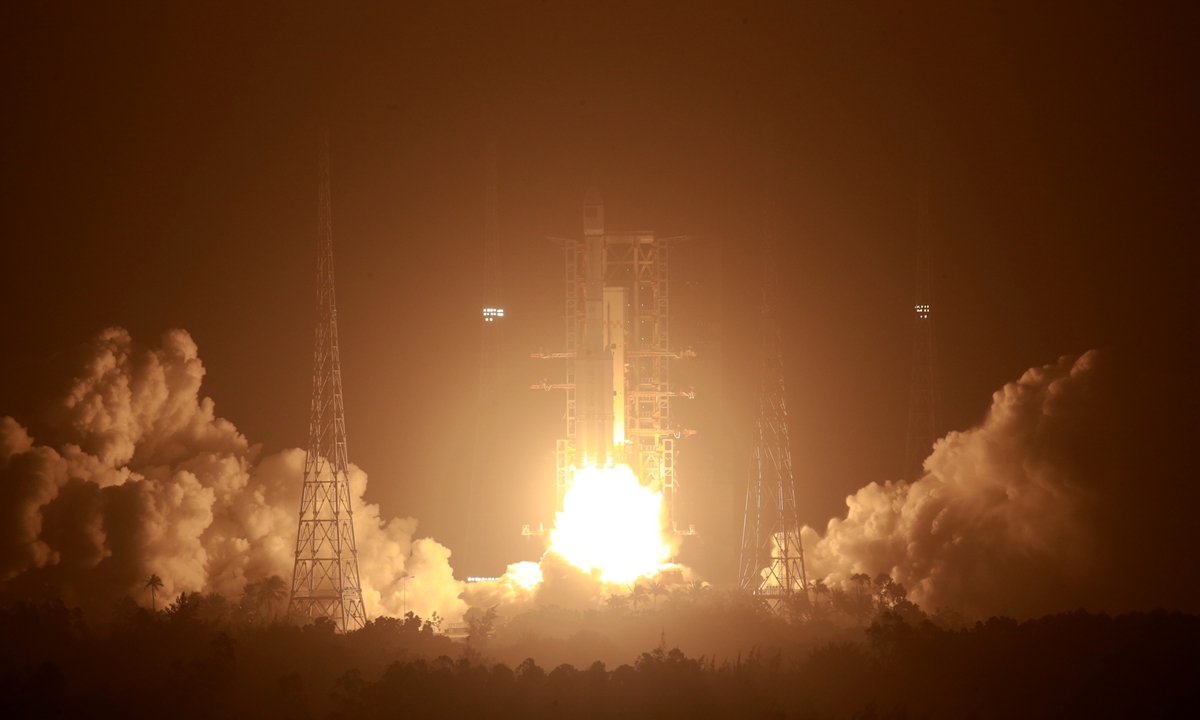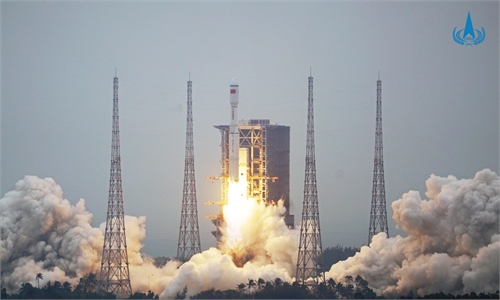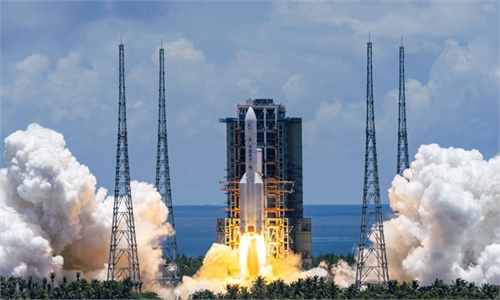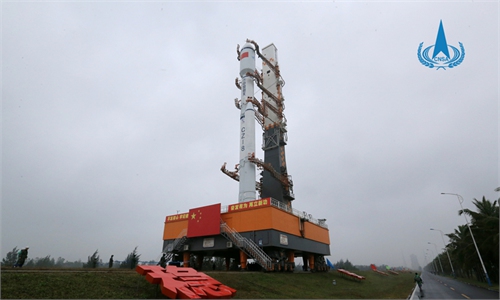SCI-TECH / AIR & SPACE
Long March-7A pulls off comeback show after failed debut mission 300 days ago

Photo: Tu Haichao
More than 300 days after its failed maiden flight in 2020, China's new generation medium-sized carrier rocket, Long March-7A, made a huge comeback with a successful launch from the Wenchang Space Launch Center, in the tropical island of Hainan in South China. Take-off went as planned, sending a technology verification satellite into preset orbit on early Friday morning, the Global Times learned from space authorities.
The launch of the clean-energy-fueled Long March-7A on Friday marks a grand beginning of China's next-generation rocket missions. According to the rocket developers from the China Academy of Launch Vehicle Technology (CALT), the roll-out of the new type of rocket would fill in a void in the country's launch capacity to the geosynchronous transfer orbit (GTO) for payload weighing from 5.5 to 7 tons.
The CALT also revealed that they are planning to develop even bigger nose cones for the current Long March 7A model, enabling it to meet the requirements of future missions, including deep space exploration and probe missions to the moon, Mars, and asteroids.
The satellite put in orbit during Friday's mission will be used to monitor space environment and test other advanced technologies, according to Chinese space authorities.
CALT informed that the new rocket is 60.1 meters long, and has a takeoff weight of 573 metric tons. It uses a 3.35-meter-diameter core stage with four 2.25-meter-diameter side boosters.
The launch vehicle is considered a variant of the Long March 7 rocket, known as the space freight train for having transported and tasked to deliver cargo spacecraft to China's space station.
Space authorities revealed that the upgraded version has a payload of 7 tons to GTO, an increase from 5.5 tons, the maximum payload of the Long March 3A family of rockets.
The new rocket model will be tasked to send high-orbit satellites, including those of the Beidou Navigation Satellite System and other telecommunication systems, to an elliptical Earth orbit with a perigee of 200 kilometers and an apogee of 36,000 kilometers.
"The new generation rocket has not only enlarged the payload from 5.5 to 7 tons, but also has a greener and environmentally friendly propellant of liquid oxygen kerosene," noted the vice chief designer of the rocket, Ma Zhonghui.
"The successful launch of the Long March 7A has further enriched the spectrum of the Long March rocket series, upgrading China's medium-sized carrier rockets. It will also drive the development of large and medium-sized satellites," chief designer of the rocket Meng Gang told the Global Times in a statement.
Although regarded as a variant of the Long March 7, the research and development of the new model is nothing like "piling boxes" of old technologies, space analysts told the Global Times. It involved a slew of scientific breakthroughs, which screened out potential risks in attitude control and course deviation and increased the rocket's reliability.
To allow Long March 7A to enter GTO, the rocket is seven meters longer than the prototype of Long March 7 and has the leanest body of all the Long March rocket family.
However, such a design makes it more difficult to remain in an upright position after liftoff, and there is always a risk that the rocket might break apart in two halfway through the launch, informed CALT.
Addressing such concerns, scientists combined features of both Long March 7 and 3A families of rockets, and came up with the idea to adapt its flying responses according to the direction of the wind, which ensured the rocket would follow the best available path to "go against the wind," CALT experts explained.
Researchers have also developed a smarter guidance system for the new model that allows it to "rise from the dead." If the rocket deviates from the preset trajectory at the second stage of flight, it will plan by itself an optimal path based on real-time information, such as position and speed.
The maiden flight of Long March 7A ended in failure on March 16, 2020 due to a loss of pressure, which led to engine malfunction. Despite the raging pandemic and the inconveniences brought by social distancing rules at the time, developers never stopped reexamining and studying the cause of the failure. In merely nine months, a correction of the original piece rolled out and passed the final round of tests on December 30, 2020.
Rocket components were delivered to the Wenchang launch site by the specially designed Yuanwang-22 cargo vessel in mid-January.
China plans to conduct more than 40 launches in 2021, with the construction of the country's first space station as its top priority, the leading domestic rocket contractor, China Aerospace Science and Technology Corp (CASC), told the Global Times back in February.
The Long March-5B, Long March-7 and Long March-2F rockets will jointly execute launch missions for the space station construction from three launch pads in two space centers to send the core module of the space station. The Tianzhou-2 cargo spaceship and the Shenzhou-12 manned spaceship will be launched this year, to complete docking and key orbital and technical verification work, Global Times learned from the CASC.
It is expected that, after the launch of the space station core cabinet by the Long March-5B, the Long March-7 and Long March-2F rockets will follow closely. The specific window for these two launches will be determined by the core module mission situation, China's biggest rocket contractor CASC said.




